Like many other people, I’ve recently been doing much more walking, cycling, reading, growing vegetables, cooking and baking. Is there anyone not making sourdough?
I’ve always been a big fan of baking bread1. I’ve been been on courses and got lots of kit (even a cane banneton).
Here’s my tried and tested recipe for a sourdough boule. Try to at least let it cool before devouring it all.

Components
Bread is almost as simple as beer in its components. All you need is love flour, water, salt and yeast. However, as with beer this apparent simplicity hides a deep complexity.
Flour
It can be difficult to get hold of flour in the current climate. I get mine from a local wholesale dealer that I can virtually see from my house. They offer next day collection and I can pop over with my bike to pick up. I’m always surprised how much you can fit in a couple of panniers and how effortlessly the bike takes the weight (as long as it’s well-balanced).
These guys take big batches of flour (16/25kg) and cut it into more manageable 3kg loads, which is still bigger than you would normally get in the shops. They also do a great range of plant-based products that are hard to source normally. Way better than your average orange faceless supermarket, and they even have loo roll in stock.
I typically use French T55 (e.g. Moul-Bie Or) for bread (equivalent to Italian ‘0’). I also often use wholemeal (which is better for you) and this has a higher number (e.g. French T150). You can blend this with white flour for a stronger bread but a completely wholemeal loaf is harder to get right.
Although T55 is supposedly equivalent to UK plain white they don’t look or behave the same. I find French T55 is far better for baking bread.
For pizza bases I use Italian ‘00’ (equivalent to French T45). You can mix this with T55 to make it stronger, or add aquafaba or some gram flour / besan (as used in a farinata).
I’ve also successfully made bread by swapping some of the flour for a small portion of porridge (oatmeal) to increase the β-glucans. However, you need to be careful not to over-hydrate the dough, which makes it difficult to handle.
Water
Just get it from the tap (faucet). Bottled water is pointless. Ideally boiled water left to cool until it is warm.
This helps to remove the chlorine added to drinking water to make it safe to consume, but which can inhibit beneficial yeast and bacterial growth too. Your microbes like it warm but not hot.
Salt
Although salt also inhibits microbial growth it is important to develop the gluten protein in the dough. Don’t overdo it.
Yeast
I’m not religious but for Lent I gave up drinking and dairy (mainly just cheese as we already don’t really do milk) and succeeded in my abstinence despite the emergence of the challenging global situation. I lost about 5kg on my teetotal and practically vegan / mainly whole food diet. I’ve kept the weight off and feel much healthier (but not hungry after meals).
Anyway, as a treat for Easter I ordered a delivery of fancy beers from a local importer and although I already had a supply of bakers yeast in I decided to turn the dregs into sourdough starters. It’s been a great success with some very interesting results.
Starter (or 10)
Making a starter (or ten) can be a challenge but is very interesting and offers a great range of flavours and behaviours. It’s also apt to make bread from liquid bread.
You need your beer to be alive and bottle/can conditioned, so it still contains active yeast. Sour fruit beers work well, particularly lambic or farmhouse styles. My dealer specialises in premium European imports with a focus on Belgian beers.
Simply mix flour, warm water and your dregs in a jar and leave in a warm place for a few days. You will want to put your starter on a saucer in case it overflows. When you are done you can refrigerate your starters until you need them.
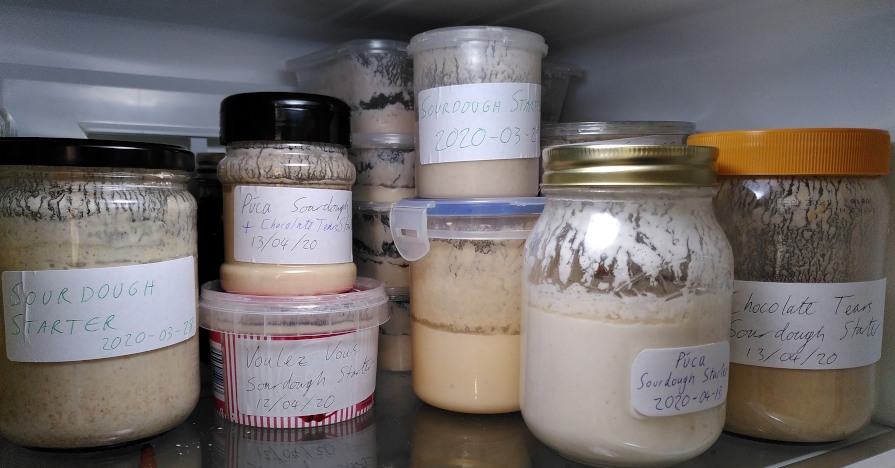
It’s interesting to compare starters and you will find that temperature is very important. You can select your sourdough starter for the ambient temperature and weather. Some like it cool and some warm, and this also affects the taste.
Recipe
This is quite a long and involved recipe that takes multiple days. You may want to time your bake to coincide with free (or paid!) super green electricity.
For example, on Saturday (23rd May, 11:00 - 16:00) Octopus Energy would have paid you for what you used (and over 10p/kWh between 14:00 and 16:00!). If you want to switch then you can get £50 off with this referral link.
If you are not with Octopus then you can still find out the greenest time to bake with the baking forecast. It uses the GB carbon intensity API to tell you when is best to put your oven on.
Kit
You will need:
- Large mixing bowl
- Mixer with dough hooks
- Cling film (plastic wrap / Saran wrap)
- Flexible dough scraper
- Flour shaker
- Cane banneton
- Cast iron casserole dish with lid
- Water spray bottle
- Metal skewers
- Cooling rack
Ingredients
You will need:
- 3 cups flour (e.g. T55)
- 1 tbsp sugar
- 1 tsp salt
- 2 tbsp oil
- 1 cup starter
- ~1 cup warm water (depends on wetness of starter)
- Flour for dusting
- Semolina for dusting
- Oil for greasing
Method
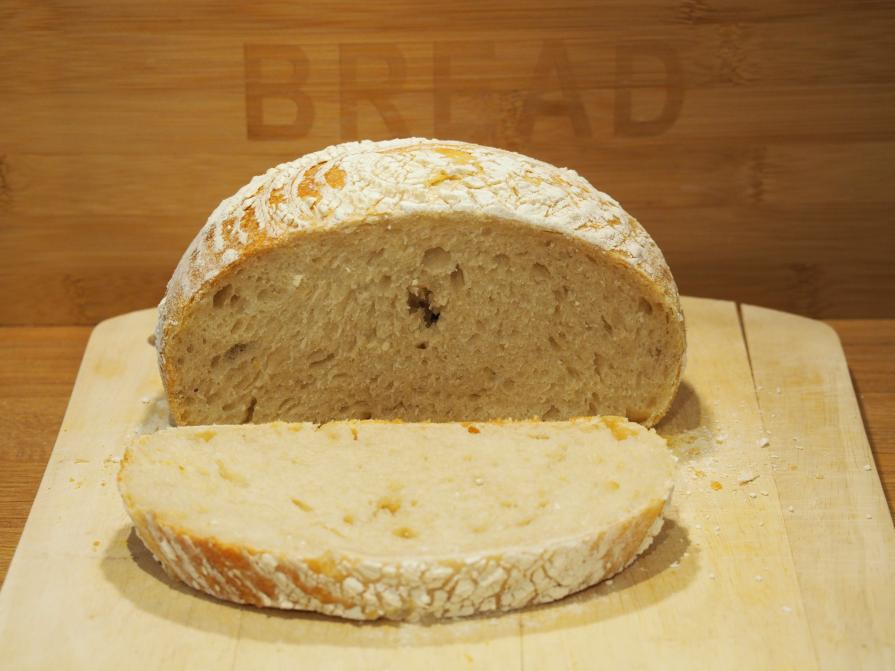
Day 1
The first morning:
- Get the starter out of the fridge
- Drain off any excess liquid
- Feed with flour and warm water
Leave to refresh until the evening. You may want to put it on a saucer if it is lively.

Once bubbly (e.g. in the evening):
- Mix the dry ingredients in a mixing bowl
- Add the oil and starter
- Add enough water to bring the dough together
- Kneed for 5 min with a mixer with dough hooks
- Form into a ball and oil
- Cover tightly with cling film
Leave to prove overnight. It should double in size and fill the bowl.
For added fun you can make a time-lapse film of your dough proving.
Day 2
The next morning:
- Scrape the dough out onto a floured surface
- Kneed by hand and form into a ball
- Place into a heavily floured banneton
Leave to prove for a couple of hours. Don’t let it get bigger than your dish.
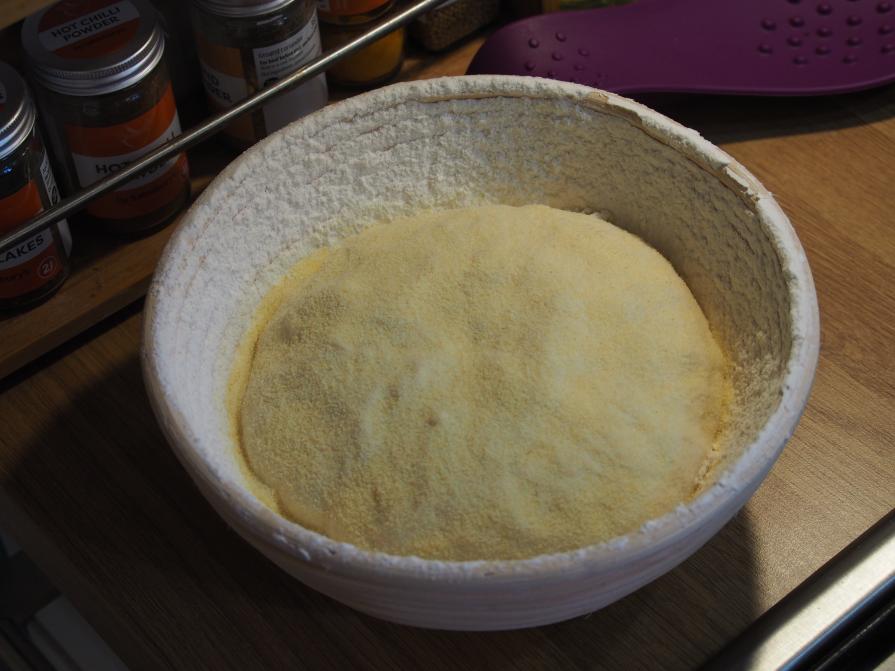
When ready to bake:
- Oil the casserole dish and put it in the oven
- Heat the fan oven up to 200°C (Gas Mark 6 / 392°F / 473.15K / 851.67°R)
- Coat the inside of the dish and top of the dough with semolina
- Turn the dough out of the banneton and drop it into the dish
- Bake for 20 minutes with the lid on
- Remove the lid and spray water into the oven before closing
- Bake for a further 20 minutes

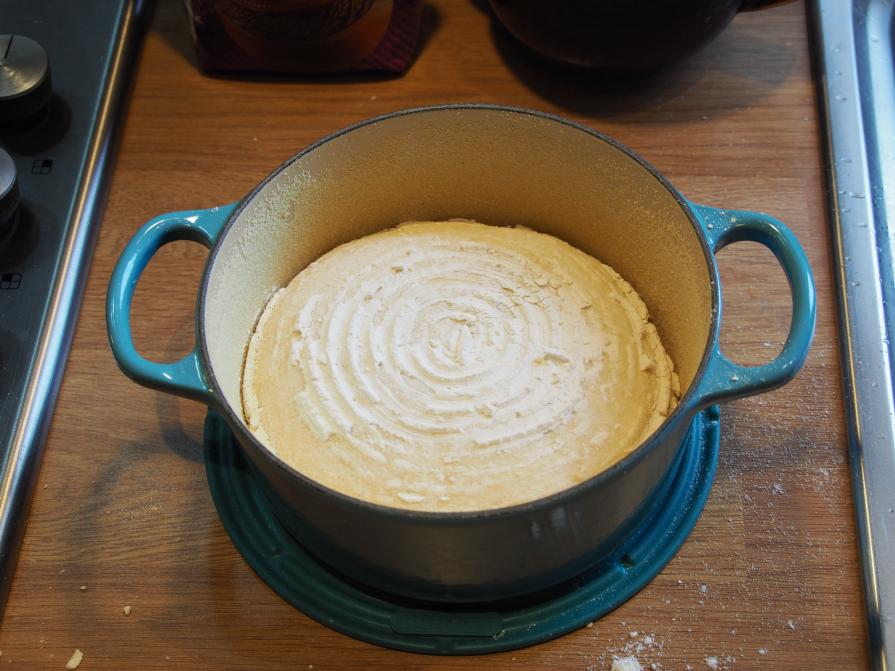
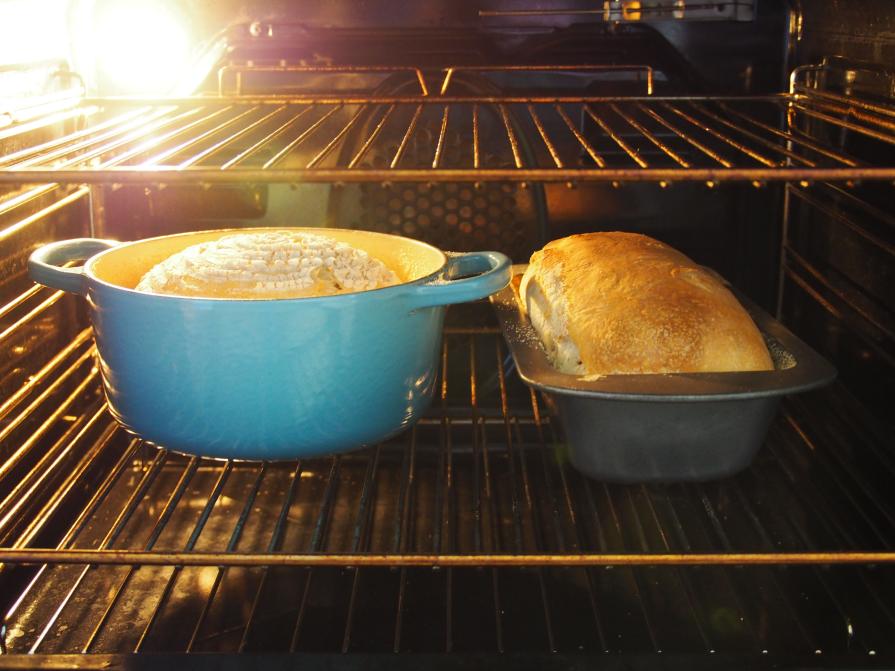
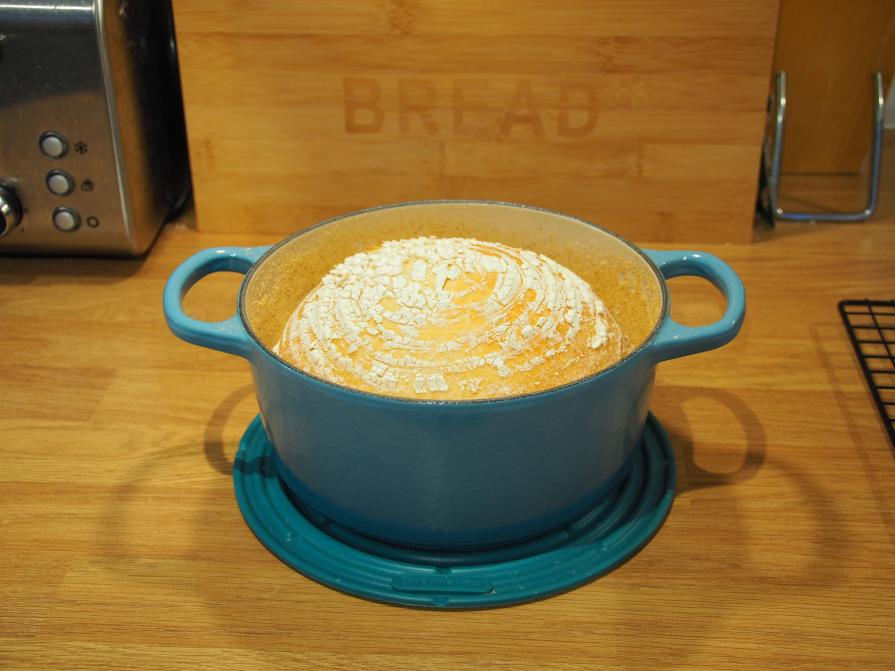
Test with a skewer and if clean remove and cool on a rack. It should sound hollow when tapped.
Next Time
Next time, sourdough muffins2 cooked in a frying pan (skillet).
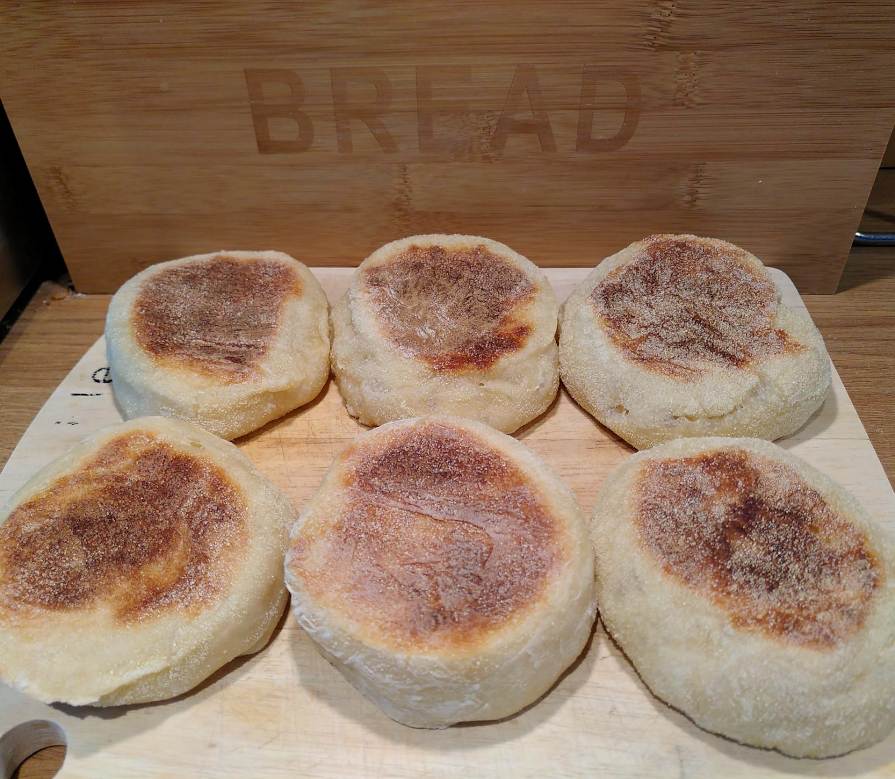
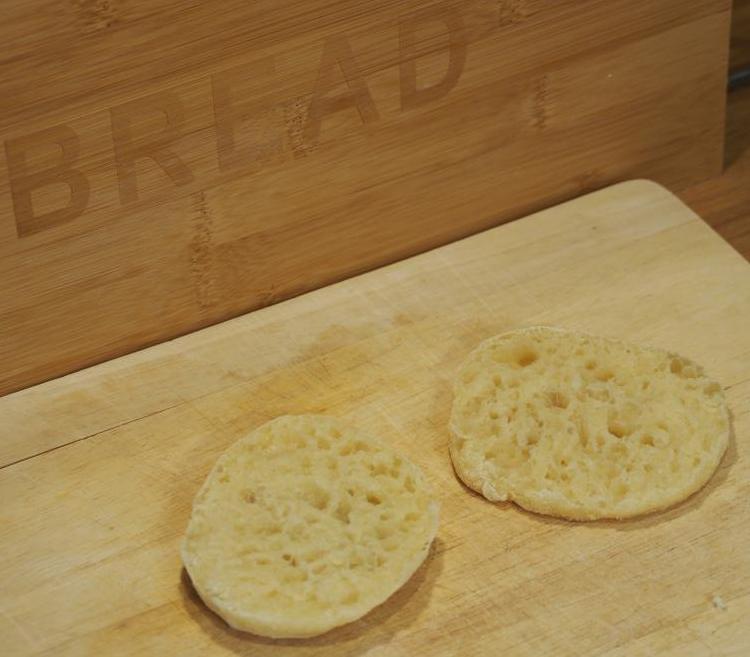

- Header image modified from SVG public domain logo (with the awesome Inkscape) and permitted under the parody fair use doctrine ↩
- You may know these as English muffins but we just call them muffins here ↩